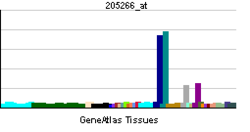THE 4TH LAW IS BEST UNDERSTOOD AS THE SET OF FORCES THAT DRIVE THE CELL FUNCTIONS IN A PARTICULAR ELECTED DIRECTION.
At molecular level, this is enforced by GENE AMPLIFICATION. That is if the cell is going toward differentiation, the cell will make cellular processes to direct all the cellular function to that aim. for specific cancer this equivalent to the notion of DRIVER Mutation. Cellular functions are not totally random and living things do not stay still! life is always on the go, and on the go for survival. And once it has chosen a direction, it direct its functions toward an overall goal which at cellular level is to ensure survival. The drive, the stamina, the direction is battery powered and purposeful!
In the cell that drive is powered and to ensure that it has direction, AMPLIFICATION GENES go to work.
One good example of this is what happens with some Viruses. A number of viruses when the enter the host cell, will incorporate their viral genome into the genome of the host to manage to use the host survival machinery to their advantage. Insertion in the genome of the host sometimes is not enough to trigger the use of the Viral genome in the host machinery, the Virus has to recruit a "growth factor" most of the time called FACTOR-1 to ensure amplification of its genetic material. (this is known for HIV infection)
In cancer cells, there are amplification genes toward the completion and survival of the cancerous process.
In lung and thyroid cancers, TTF-1 represent such a gene. found amplified in about 10 % of tumors. Scientist have had trouble defining its role. But they know its AMPLIFICATION is bad news for the host. It is a driver gene for the cancerous process. In the cell, there are several levels of GENE AMPLIFICATIONS.
The first level is mission driven. If the mission is to differentiate, this 4th law push to achieve the mission.
if the mission is to grow a cancer, the cell uses all its resources to make a "perfect cancer." This means, tolerate error in the DNA multiplication, down-regulate the repair mechanism, down-regulate or mutate the regulator of P53, MDM2. Amplify VGEF so that the tumor has plenty of good blood vessels.
The second level of amplification is actually originating from the stimulus, the cause of the transformation. the cause could be a change in Oxygen level, a break of shorten Telomerase tail, Tumor growth factor (FGF-1), Cyclins, or an oncogenic mutation or break of DNA strands. This will ultimately stimulate receptors with subsequent signal transduction pathways flow that could be amplified by way of intensity of the signals, but also enzymatic up-regulation and nuclear transcription amplification. Amplification can be then cancerous based, but also stimuli caused.
the 3rd amplification is what occurs at the DRIVER Mutation due to growth factors or increased catalytic rate from related enzymes.
It is hard to measure cancer driven gene Amplification. Most of the study keeps taking Metothrexate and its mechanism of Resistance because amplification of Dehydrofolate Reductase is the mechanism of resistance. every body focus on this enzyme to measure resistance. But when you look at amplification at this various levels, it is not hard to see that these measurements are missing the point or are just misleading.
We will discuss the relevant Genes under the section or Rubric "NOMENCLATURE". Frankly speaking, we have not finished yet the genes for the 3rd law.
We are working hard at CRBCM!



